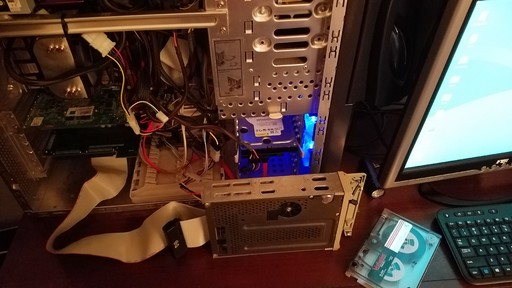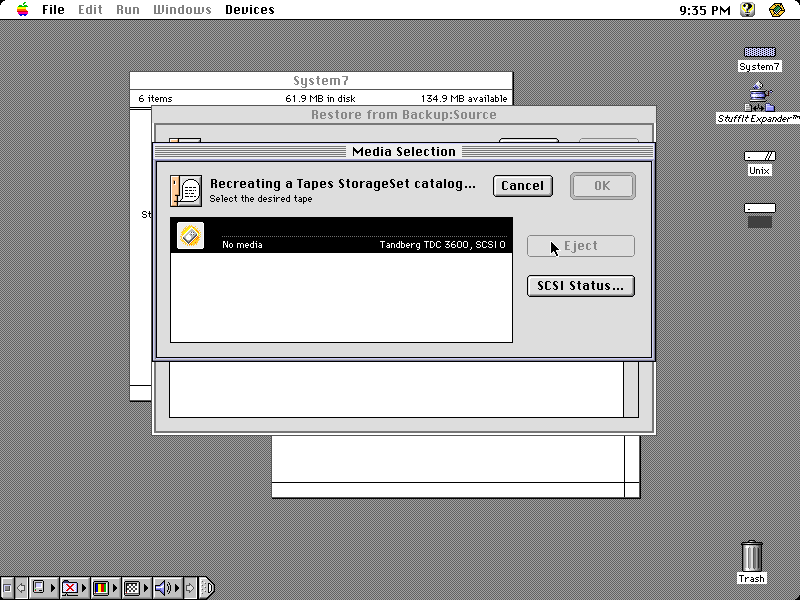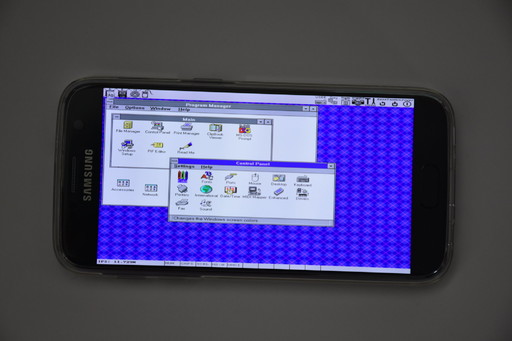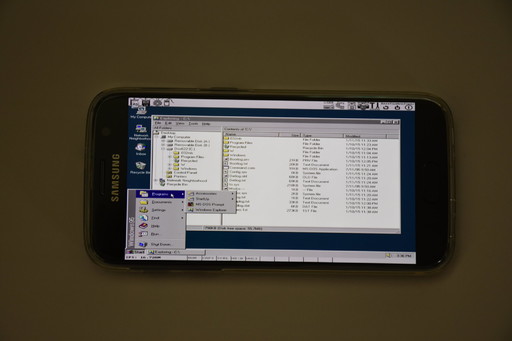Imagine a game that shows you a random number and asks you to give that number a name, and upload it to a database. That, in a reductive nutshell, is the general idea of No Man’s Sky. The question is whether No Man’s Sky dresses up this mundane premise in a way that makes it worth playing. The short answer, I’m afraid, is no. The game disappointed me in several ways, which I’ll outline below, along with some lessons and recommendations for future game developers, which they are welcome to take or leave.
General disappointment
In a broad sense, the game is indeed revolutionary, since it allows the player to roam free in a universe filled with procedurally generated planets, meaning that no two planets are exactly alike. The game allows for 18 quintillion (264) such planets, giving the player an inexhaustible supply of new worlds to visit and explore. And make no mistake: the first impression that this game gives you is outstanding – breathtaking vistas, a world bustling with life, and seemingly unlimited possibilities for exploration.
Unfortunately, the procedurally generated elements are only a thin veneer on top of a whole lot of repetition and mundanity. After exploring a few planets, it becomes clear that while the landscapes are indeed randomly generated, the small-scale structures are pulled from a very limited selection of shapes. Things like trees, flowers, corals, crystals, geologic structures, etc. are nearly identical from planet to planet. The various animals that can be found on each planet (again, randomly generated permutations of a small selection of body part shapes) provide some amusement, but there’s nothing else to do with them except catalog and upload them to a database that no one will ever see.
Each planet is also peppered with “artificial” structures like trading posts, transmission towers, and manufacturing facilities. All of these are identical from one planet to the next. If you’ve visited one, you’ve visited them all. The same goes for space stations that are present in every star system: they look nearly identical on the outside, and exactly identical on the inside.
The intelligent aliens that you encounter along your travels look and behave identically, are completely static, and allow for a single conversation that has zero consequence, and may provide a crafting schematic that you already have.
“Star systems” are not really star systems; they are clumps of a few planets in close proximity, between which you can hop in your starship. Space itself, far from being empty, is jam-packed with asteroids that are made of starship fuel, conveniently enough.
There’s never any sense of danger, since you can crash directly into asteroids while taking minimal damage, and the game simply won’t let you fly too close to the surface of planets. The idea of survival being one of the pillars of this game is laughable. You really have to try to get killed in this universe.
The game’s universe also feels sort of abandoned: none of the planets have any cities or settlements, except the aforementioned lone buildings, which are sparsely spread out and manned by a single alien at most. Where do these aliens come from? What do they do outside of work?
There are also occasional starships or freighters floating around in space between the planets, whose only purpose is to tempt you to steal their cargo. Where do these ships come from? Where are they going? Does it matter?
Occasionally, you’re attacked by hostile starships in space, or by hostile “sentinels” on the ground. They appear out of thin air, and their motivation is completely unknown. The battles unfold identically from one instance to the next. The battles also have zero consequence, since you can return to your death point and retrieve your lost items, with the enemy no longer in pursuit. And thus, the game manages to reduce something as exciting as a battle to even more monotony.
Therefore, on the whole, the novelty of this procedurally generated universe wears off after a couple hours. After that, it becomes a tedious grind of collecting resources to power your starship and expand your inventory, with ever-diminishing reason to do so.
Specific disappointment
From the beginning of the game, the player is given the option to follow a storyline where the player embarks on the path of “the Atlas”, a mysterious force/entity that starts to guide the player towards a vague eventual goal. The storyline has a good dose of mysticism and philosophy, as well as some nice visuals along the way. I found this storyline much more interesting than any of the procedurally generated elements in the game, which says a lot about the latter.
However, the ultimate disappointment came at the end of the Atlas storyline. The game asks the player to collect ten “Atlas stones”, which involves a time-consuming process of collecting resources, crafting new supplies, and upgrading your starship so that you can travel from one Atlas station to the next. At each Atlas station, the suspense builds, and the player expects an ever-more-grandiose payoff at the end. But instead of a grandiose payoff, we get… nothing.
When you turn in the ten Atlas stones into which you’ve invested so much time, you’re told (not shown) that you’ve fulfilled your destiny by “birthing a new star”, and that you’re now “free to explore” on your own. This is done offhandedly, in the exact same conversation interface as all other interactions in the game, and with no other visuals to make note of your accomplishment. You’re not shown this new star, there’s no cutaway scene, and there’s not even any reward in terms of upgrades, milestones, or possessions. The game simply continues, with no further information given.
At first I honestly thought that it was a bug in the game. But when the realization sank in that the storyline was over with absolutely no payoff, I was kind of appalled, and was pretty much turned off from playing the game any further.
I’ve also already read spoilers of the actual “ending” of the game (when the player reaches the center of the galaxy), which turns out to be almost equally unsatisfying. I therefore have zero interest in completing that portion of the game, either. All that’s left is to visit random planets and upload them into a database that no one will ever see. Or, more precisely, look at random numbers and give them a name. No, thank you.
Controls and user interface
The controls in the game are very frustrating. I played the PC version of the game, and it doesn’t feel like it was built for a PC; instead it feels like a back-port of the PS4 version, or some kind of lowest-common-denominator between the two. When I press a button on the keyboard, or click my mouse, I expect that action to have an immediate effect. However, the game expects you to press and hold your mouse and keyboard buttons for a split second, in order to perform the desired action. Moreover, this scheme is inconsistent: some actions are immediate, while others are press-and-hold. This requires users to unlearn the way they’ve interacted with PCs since the beginning of time, and adds a huge amount of unnecessary frustration.
All of the conversations with aliens and interactions with objects come with built-in mandatory delays, to accommodate a slow animation that cannot be skipped. This is fine the first few times, but then becomes very annoying. The biggest offender in this category is the interaction for selling items on the “galactic market”, where the interface animates for a full five seconds before offering the options to buy or sell items.
Maneuvering through space in your starship works well enough, but becomes inexplicably terrible when maneuvering over a planet’s surface. At random times, your ship will pull itself to the left or right. There’s an invisible barrier that prevents you from flying too low, which takes away any excitement you might get from wanting to fly through canyons or mountain ranges. When taking off from the ground, your launch thruster may put you a few kilometers above ground, or it may put you into orbit, with no clear way to control it. But I digress.
The Good
The best thing I can say about No Man’s Sky is that it’s a beautiful proof of concept, and I certainly don’t regret trying it out. As a software developer, I can appreciate the tremendous engineering skill that went into constructing this world. I can also see exactly what “happened” in the development of this game: 99% of the effort went towards building the game engine, and 1% went towards thinking about the story and the gameplay.
Nevertheless, the fact that it was executed by an indie game studio makes it doubly impressive. No Man’s Sky has laid the groundwork for a procedurally generated sci-fi adventure. To see that it’s even possible to create this kind of world is very encouraging. I look forward to the next iteration in this genre, perhaps executed by a major game studio, that might feature more meaningful procedural elements, better multiplayer interactions, and most importantly, deeper storylines.
To summarize, there’s a brilliant little YouTube video that captures my feelings on the game perfectly. Enjoy.









